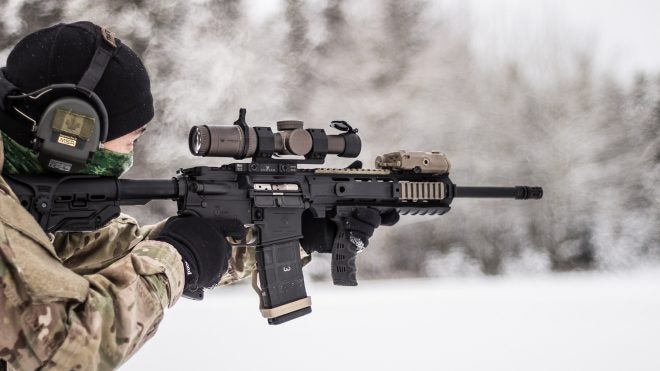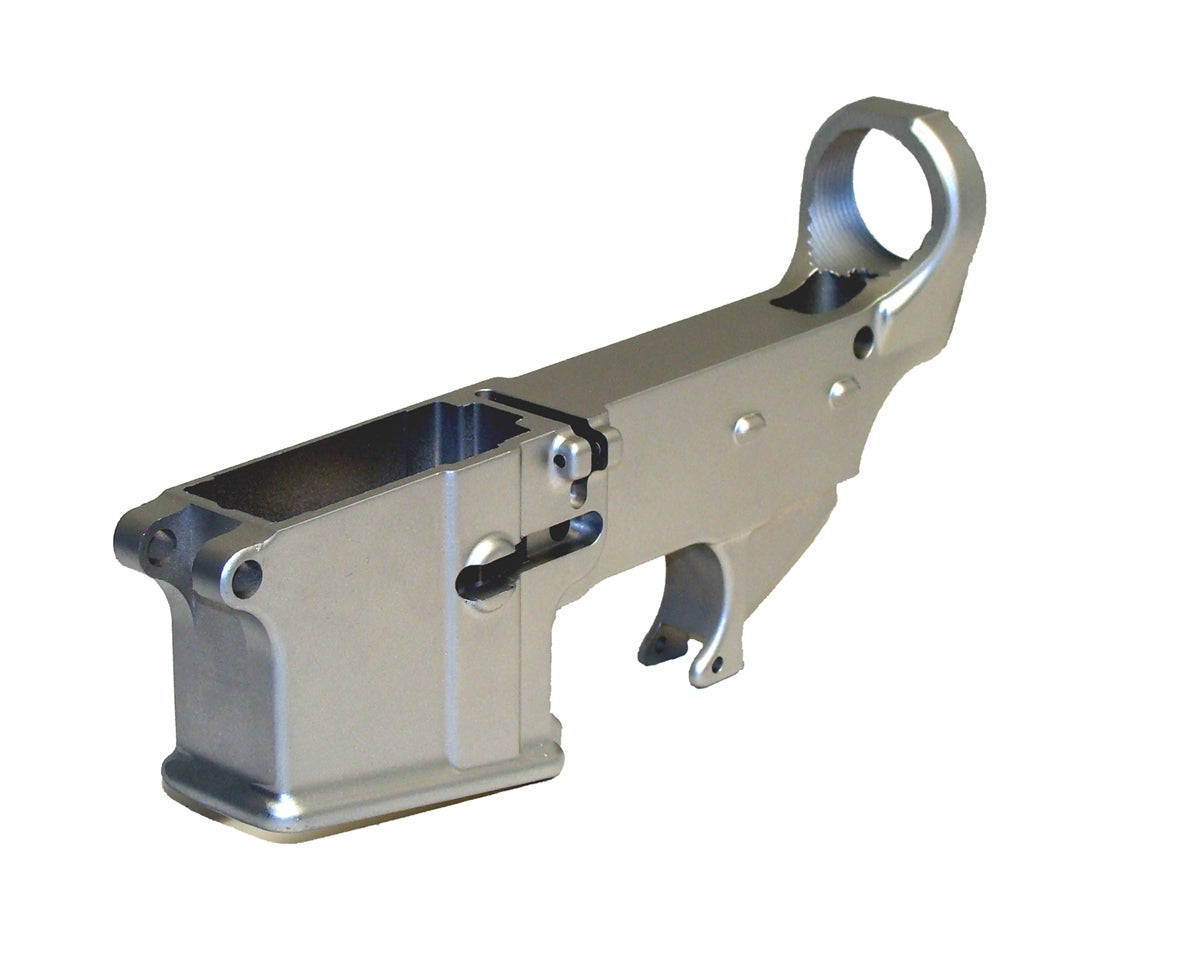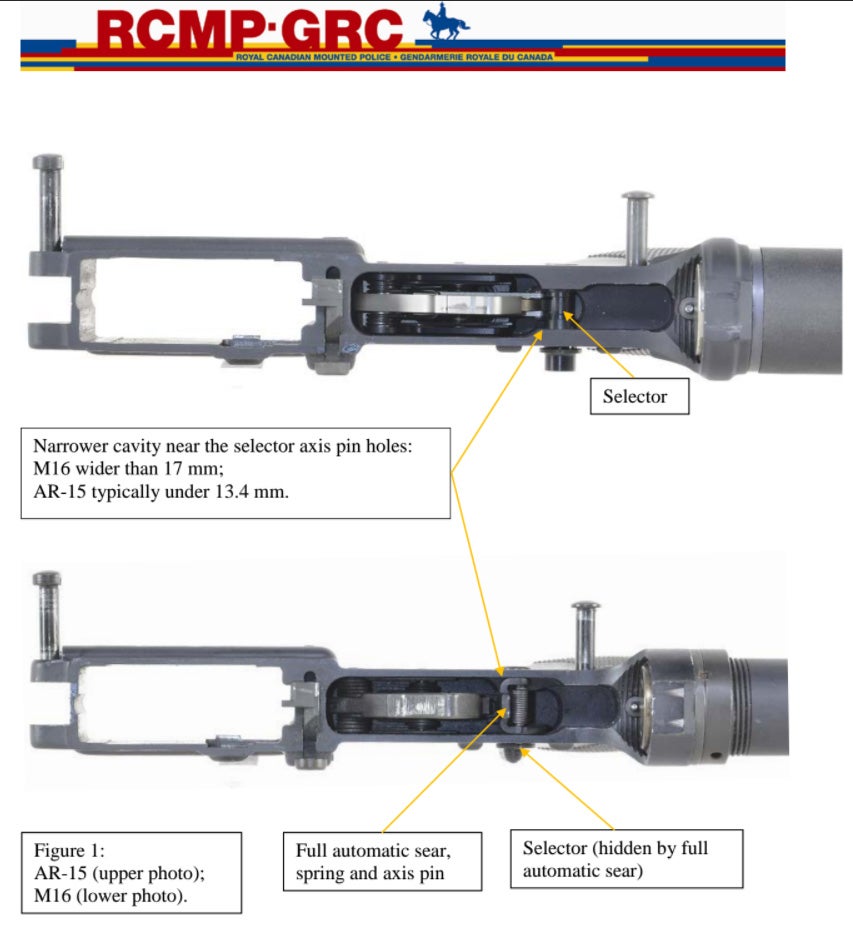In Canada, the AR-15 is on thin ice. More apocalyptic individuals might read the portents and see a ban on the horizon.
I’m going to do my best not to break the first sacred law of TFB in this article. With that in mind I’ll lean heavily on the technical rather than the political, but there is no doubt the state of the Northern AR is changing.
And if I, a deprived Canadian writer, am going to read the full text of silly ATF shoulder brace rulings and Hughes Amendment details, then I’ll share our comparative equivalent with you.
In Canada, there are two bodies that govern firearms, one officially and one unofficially. We have a series of laws laying out who may get a firearms license, what kind of firearms they can get, and a loose list of things that aren’t allowed. Bill C-17 and C-68 were the most recent legislated bans implemented in the mid-90s which prohibited a large range of black rifles and their “variants.”
But we also have the RCMP. The RCMP administers the Canadian Firearms Program, and as a result is often tasked with identifying firearms. They get to publish interpretations and opinions on the laws. Sometimes those opinions change.
In June the RCMP distributed a document to retailers and importers regarding 80% lowers. Before that, the RCMP appeared to agree with the ATF: any receiver below the 80% completion point was effectively not a firearm. Taken beyond that, it was a legal firearm and had to be serialized and registered.
This new opinion changes in two key ways:
Uncompleted AR-15 lowers are now prohibited as machine guns. The argument is that at a blank state, the machining skills involved to complete the lower easily allow the owner to create either an M16 lower or an AR-15 lower. There’s just no way to be sure some maniac machinist won’t break the law. So to hell with it! Ban em all!
But also 80% is no longer the threshold. The text refers to “receiver blanks” and calls by owners to the CFP have relayed clarifying statements like “when it serves no other purpose but to become a firearm, then it’s a firearm” or “as soon as it’s designated to become a firearm, then it’s a firearm.”
These statements are clearly not enough. If I start using my fully functional lower as a doorstop, no jury in the country is going to buy that it’s found a new purpose in life and is no longer a firearm. Conversely, if I take a sharpie marker to a block of aluminum and say “someday I’ll shape you into a beautiful shooty-shooty machine” I can’t imagine the black helicopters are about to descend and charge me for that.
But the line we had was gone.
Lets go back a step: earlier in April 2017, the RCMP published another opinion on AR lowers, again breaking from the ATF stance.
Like the ATF, we previously had a “3rd pin” system to determine whether a receiver was designed for semi auto or full auto use. Essentially, if you can drop in full auto parts, and the gun goes full auto, then the receiver is prohibited. If you modify a receiver to accept full auto parts: that’s you breaking the law and creating an unregistered machine gun.
Now though… ah hell I’ll give you the text in their own words:
“At least one lower receiver wall must be thickened in the interior cavity above and below the selector axis hole at least as wide as the standard AR-15 pattern selector axis hole (0.375 inches / 9.53 mm) and from the bottom of the cavity to the top, such that the distance between the left and right lower receiver walls is narrowed so that an M16 pattern full automatic sear cannot be installed without substantial removal of material from the receiver walls.”
The RCMP has determined that only the original SP-1 layout is a “true” AR-15, and that other receiver configurations with wider or alternate trigger pockets are M-16s in waiting which “risk falling into the prohibited firearm category as they can be easily converted to fire in a full automatic manner in a short period of time.”
This is one of my biggest frustrations with the Canadian system. I don’t particularly mind jumping through hoops to get things, but the idea that something can be legal one morning and illegal the next rankles me. It’s ridiculous to have this kind of constantly shifting environment, with changes quietly filtering out several times a year.
Canadian firearms organizations like the CCFR, CSSA, and NFA will all likely do their best with these, but the fact is that they’re technical enough encroachments by law enforcement that they’re unlikely to get substantial numbers of Canadian firearms owners whipped up and donating to the already divided lobbying landscape.
 Your Privacy Choices
Your Privacy Choices



